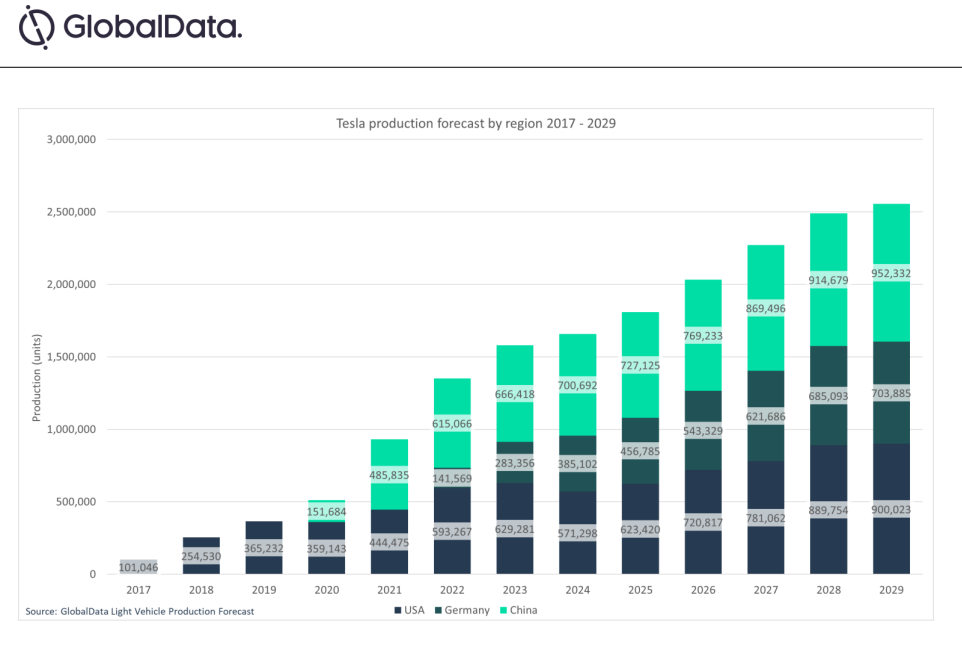Understanding Tesla's Canadian Price Increases And Inventory Strategy

Table of Contents
Factors Contributing to Tesla Price Increases in Canada
Several interconnected factors contribute to the fluctuating prices of Tesla vehicles in Canada. Understanding these elements is key to navigating the market effectively.
Currency Fluctuations and Import Costs
The Canadian dollar's (CAD) volatility against the US dollar (USD) significantly impacts the cost of importing Tesla vehicles. Since Tesla vehicles are primarily manufactured in the US, a weaker CAD means it takes more Canadian dollars to purchase the same number of USD, directly increasing the landed cost in Canada. This relationship between CAD/USD exchange rates and vehicle pricing is almost directly proportional; a weaker CAD leads to higher prices for Canadian consumers. Potential tariff implications further complicate the matter, adding additional costs that get passed onto the buyer.
- Increased shipping costs: Global shipping costs have also risen, adding to the overall import expenses.
- Fluctuating USD value: The fluctuating USD value against the CAD creates price instability for Tesla in the Canadian market.
- Impact on landed cost: The combined effect of currency fluctuations and shipping costs directly impacts the final landed cost of Tesla vehicles in Canada.
Supply Chain Disruptions and Material Costs
The ongoing global chip shortage continues to disrupt automotive production worldwide, including Tesla. This shortage limits the number of vehicles Tesla can produce, impacting availability and potentially justifying price increases to meet production costs and maintain profit margins. Furthermore, the rising costs of raw materials crucial for EV battery production, such as lithium and cobalt, significantly affect manufacturing costs. These rising input costs are inevitably passed along to consumers in the form of higher vehicle prices.
- Global semiconductor shortage: The ongoing chip shortage continues to constrain Tesla's production capacity.
- Increased battery material costs: The price of raw materials like lithium and cobalt has increased dramatically.
- Manufacturing bottlenecks: Supply chain disruptions lead to production delays and increased manufacturing costs.
Government Regulations and Incentives
Canadian government policies, including federal and provincial incentives for EV adoption, play a complex role in Tesla's pricing. While incentives can make EVs more affordable, changes to these programs or the introduction of new import duties or environmental regulations can affect Tesla's pricing decisions. For example, a reduction in government subsidies could lead to Tesla increasing prices to maintain profitability. Conversely, increased incentives could allow Tesla to adjust pricing strategies, making vehicles more competitive.
- Federal and Provincial EV incentives: These programs influence consumer demand and can indirectly affect pricing.
- Changes in import tariffs: Adjustments to import duties can significantly alter the cost of importing Tesla vehicles.
- Impact of environmental regulations: Stringent environmental regulations might increase manufacturing costs, which could be passed onto consumers.
Tesla's Canadian Inventory Management Strategies
Tesla's inventory management approach in Canada is a critical factor influencing vehicle availability and pricing. Their unique strategy differs significantly from traditional automakers.
Demand vs. Supply
Tesla currently faces high demand for its vehicles in Canada. This strong demand, coupled with production capacity constraints stemming from supply chain issues, leads to situations where supply falls short of demand. Tesla may strategically manage its inventory to prioritize more profitable models or regions, potentially leading to variations in availability across different vehicle trims and locations. This strategy allows Tesla to maximize profitability in a constrained supply environment.
- High demand for specific models: Certain Tesla models are in higher demand than others, influencing inventory allocation.
- Production capacity constraints: Limited production capacity forces Tesla to manage its inventory carefully.
- Strategic inventory allocation: Tesla prioritizes inventory allocation based on demand and profitability.
Direct Sales Model and Online Ordering
Tesla's direct-to-consumer sales model, bypassing traditional dealerships, allows for greater control over inventory management and pricing. The online ordering system provides real-time inventory updates, offering transparency to customers. However, this also means that customers' expectations regarding availability are directly linked to Tesla's inventory levels and production capabilities.
- Reduced reliance on dealerships: Tesla's direct sales model gives them greater control over inventory management.
- Real-time inventory updates online: The online platform provides transparent information about vehicle availability.
- Simplified ordering process: The online ordering process streamlines the purchasing experience.
Regional Variations in Inventory
Inventory levels might vary across different Canadian provinces due to several factors. Population density, the level of EV adoption in each region, and the existing charging infrastructure all contribute to regional differences in demand. Tesla might adjust its inventory allocation to respond to these variations, ensuring that vehicles are available where demand is highest.
- Provincial differences in EV adoption: Some provinces have higher rates of EV adoption than others.
- Infrastructure considerations: The availability of charging infrastructure influences consumer demand in a region.
- Regional demand fluctuations: Demand for Tesla vehicles can vary based on regional economic factors and consumer preferences.
Conclusion
Tesla's Canadian price increases and inventory strategy are complex and multifaceted, driven by a combination of global and local factors. Understanding these dynamics is crucial for both prospective buyers and industry analysts. While currency fluctuations, supply chain issues, and government policies play a significant role in shaping pricing, Tesla's direct sales model and inventory management strategies further impact vehicle availability. To stay informed about the latest developments in Tesla's Canadian market and make informed decisions regarding purchasing a Tesla, continue to monitor market trends, official Tesla announcements, and independent analyses of the Canadian automotive sector. Staying up-to-date on Tesla's Canadian price increases and inventory strategy is key to making a smart purchase.

Featured Posts
-
 Kanopys Hidden Gems Free Movies And Shows You Shouldnt Miss
Apr 27, 2025
Kanopys Hidden Gems Free Movies And Shows You Shouldnt Miss
Apr 27, 2025 -
 Licencia De Maternidad De Un Ano Para Tenistas Wta Un Avance Historico
Apr 27, 2025
Licencia De Maternidad De Un Ano Para Tenistas Wta Un Avance Historico
Apr 27, 2025 -
 Grand National Horse Deaths A Look Ahead To 2025
Apr 27, 2025
Grand National Horse Deaths A Look Ahead To 2025
Apr 27, 2025 -
 Alaska Adventure Ariana Biermanns Romantic Trip
Apr 27, 2025
Alaska Adventure Ariana Biermanns Romantic Trip
Apr 27, 2025 -
 Ariana Grande Debuts Dramatic Hair And Tattoo Changes A Look At The Professional Expertise Involved
Apr 27, 2025
Ariana Grande Debuts Dramatic Hair And Tattoo Changes A Look At The Professional Expertise Involved
Apr 27, 2025
Latest Posts
-
 Confronting Google Perplexitys Ceo On The Emerging Ai Browser Landscape
Apr 28, 2025
Confronting Google Perplexitys Ceo On The Emerging Ai Browser Landscape
Apr 28, 2025 -
 The Future Of Browsers A Conversation With Perplexitys Ceo On The Ai Revolution And Competition With Google
Apr 28, 2025
The Future Of Browsers A Conversation With Perplexitys Ceo On The Ai Revolution And Competition With Google
Apr 28, 2025 -
 Ai Browser Battle Perplexity Ceos Strategy To Challenge Google
Apr 28, 2025
Ai Browser Battle Perplexity Ceos Strategy To Challenge Google
Apr 28, 2025 -
 Cnn Features Top Chefs Fishermans Stew Delights Eva Longoria
Apr 28, 2025
Cnn Features Top Chefs Fishermans Stew Delights Eva Longoria
Apr 28, 2025 -
 Fishermans Stew A World Class Chefs Recipe Wins Over Eva Longoria
Apr 28, 2025
Fishermans Stew A World Class Chefs Recipe Wins Over Eva Longoria
Apr 28, 2025
